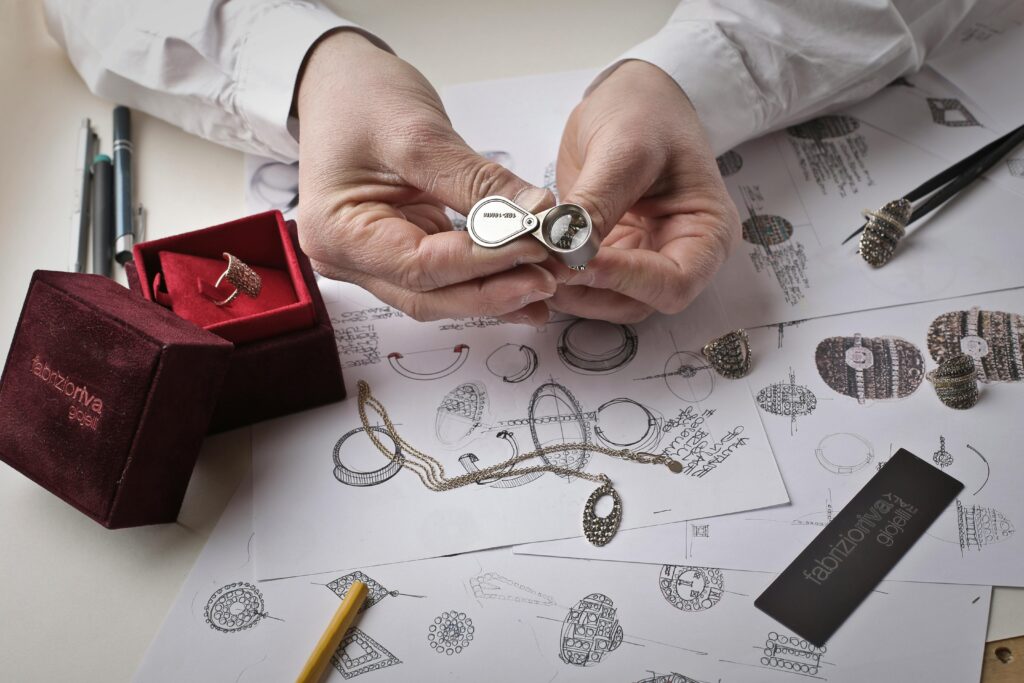Woman Aged 101 Reveals Why Staying Active Keeps Her Going

Most people picture retirement as a gentle winding down. A quieter life, perhaps a bit of travel, maybe some hobbies, and the freedom to slow the pace after decades of work. Yet for 101-year-old Ann Angeletti of New Jersey, that traditional vision could not be further from her reality. For her, work is not a burden. It is a lifeline. She has spent more than a century building routines, communities and a deep sense of purpose that she has no intention of leaving behind.
Across multiple interviews and human interest profiles, Ann has spoken plainly about her fear of retirement. Far from being symbolic or exaggerated, she believes stepping away from her daily work would directly affect her health and well-being. It may sound surprising at first, but her perspective aligns closely with research on aging, social connection and longevity.
This article takes a neutral and comprehensive look at Ann’s story, drawing on the details found in the reference articles and expanding on the wider themes her life brings to light. Her daily routine, her history of hard work, her unwavering sense of purpose and her clear philosophy about aging all offer insight into what it means to remain active and engaged well into later life.
A Lifetime of Work Shaped by Early Responsibility
Ann was born in the early 1920s, a period defined by both societal transformation and hardship. Long before modern conveniences or digital distractions, she grew up in a Brooklyn household where everyone contributed to the family’s survival. She left school as a child to help her family run their grocery store. Her father delivered ice door to door using a horse-drawn cart, providing one of the few ways households could keep food chilled before refrigeration became common.
This early exposure to constant responsibility shaped her worldview. In multiple interviews, her family members describe her as someone who has always been active, adaptable and resilient.

Her granddaughter noted that people are usually shocked to learn her age because she does not match conventional expectations of a centenarian. She is energetic, social and stylish, and she still lives independently in her own apartment.
These qualities did not appear suddenly in her later years. They are the result of decades of sustained activity. During World War II, she worked at the Navy Yard while her husband fought overseas. Later, she took on roles as a waitress, a short order cook and a bookkeeper. Each job added skills, structure and purpose to her life. When she eventually opened her own jewelry store in 1964, she was prepared to manage customers, inventory and the administrative tasks of running a business.
Building Curiosity Jewelers and a Multi Generational Legacy

Curiosity Jewelers, located in Cresskill, New Jersey, has become a place that represents more than a livelihood for Ann. It is a social hub, a creative environment and a family legacy. She originally started the business when she saw that a local jewelry shop was up for rent. The monthly cost was 85 dollars at the time, and she seized the opportunity.
Today, she still runs the store alongside her daughter and granddaughter. Customers frequently describe the shop not just as a retail space but as a warm and welcoming environment shaped by Ann’s personality. She encourages visitors to come in, sit down, enjoy a cup of coffee and talk. Whether or not they make a purchase is far less important to her than the interaction.
Her granddaughter explains that Ann essentially works seven days a week even though the store officially operates six. She is regularly in New York City buying merchandise, organizing the shop, or preparing for the week ahead. The store provides a consistent routine that helps anchor her days. It also connects her to multiple generations of customers and community members who view her as an inspiration and a role model.
Why Retirement Feels Like a Threat Instead of a Reward

Ann’s most widely quoted remark is simple: If I retire, I would die. She does not offer it as a dramatic or humorous claim. For her, it reflects a deeply held belief about the risks of inactivity. She worries that if she stopped working, she would lose her reason to get up, get dressed, and engage with the world. The structure that work provides plays a significant role in her emotional and physical health.
Her family supports this view. Her granddaughter describes the store not only as a workplace but as a vital source of social interaction. Ann gets to meet people, share stories, stay mentally sharp and remain physically active. These activities stimulate her mind and keep her connected to others.
Her perspective aligns with ongoing discussions about aging and purpose. Studies have found that social engagement, routine and mental stimulation all contribute to longevity. Some research suggests that leaving the workforce early may be associated with certain health risks, although the findings vary. The key insight is that purpose matters. For some people, work continues to provide that purpose long after typical retirement age.
Ann does not portray retirement as a universally negative choice. Rather, she explains that it holds little appeal in her own life because she would not know what to do with her time. She views the absence of daily structure as potentially harmful and prefers to remain active in a way that feels meaningful and fulfilling.
A Daily Routine Built on Movement, Self Care and Social Connection

Ann’s routine has evolved over the decades, but several components have remained consistent. She starts each day with self-care, which she believes is essential for maintaining health at any age. She gets up, showers, eats a balanced breakfast and exercises.
Her exercise routine began intensively in her 40s, when she walked three miles each morning, climbed 20 flights of stairs and did daily sit-ups. Today, she still exercises for about 30 minutes every morning. Her activities include leg lifts, arm exercises with light weights and stretching. These movements help maintain mobility and strength, two factors that are essential for independence in later life.
Her evenings also play a role in her overall well-being. Every Saturday night, she goes out with friends for dinner and dancing. She admits she no longer dances the way she used to, but she still enjoys one or two dances per outing. This weekly social ritual reinforces her sense of community and enjoyment.
Nutrition and Long Term Health
Ann’s diet appears to be a combination of consistency, moderation and personal preference. She eats an egg every morning along with oatmeal, orange juice, a tablespoon of olive oil, a tablespoon of apple cider vinegar and a cup of black coffee. Her meals throughout the day are typically simple and nutritious. She enjoys fish, chicken, Chinese and Mediterranean dishes, along with a range of vegetables including spinach, tomatoes and broccoli rabe.
She rarely eats sweets, with vanilla fudge as an occasional exception. She also avoids processed snacks like chips and pretzels. Her eating habits were influenced by her parents, who maintained a structured and produce focused approach to meals. Their own longevity may reflect the benefits of that dietary lifestyle.
Nutritional experts often highlight the value of eggs, fish, vegetables and healthy fats, all of which play a role in supporting energy and long term wellness. Her approach is not based on trends or strict regimens but on familiarity and moderation, which may have contributed to her good health into her second century of life.
A Predictable Routine That Supports Independence
Routine is essential to many centenarians, and Ann is no exception. Her mornings, work schedule, exercise habits and social activities form a pattern that reinforces stability. Predictable routines are linked with cognitive function, emotional well-being and reduced stress.
In her case, routine also supports independence. She still drives, manages her own household and handles the business responsibilities of running a jewelry shop. These elements of independence are especially significant for older adults, as they help maintain confidence and self-sufficiency.
The Broader Context of Work, Purpose and Aging

Ann’s story raises important questions about how society views work and aging. Many people aspire to retire early, following strategies like the FIRE movement. Others continue working because they enjoy it, or because it provides financial security. Ann represents the latter category, yet her reasons extend beyond necessity.
Researchers have found that late retirement may be associated with certain benefits, such as delayed cognitive decline or continued physical activity. However, they also note that the value of work is highly individual. What matters most is whether a person remains engaged, challenged and socially connected, regardless of whether that happens through employment, volunteering or other structured activities.
Her life illustrates one possible path. It is not a universal blueprint, but it highlights the potential health benefits of continued engagement. She shows that staying mentally active, maintaining relationships and preserving daily routines may all contribute to longevity.
A Reflection on Meaningful Living at Any Age

Ann’s story resonates because it counters common assumptions about aging. Rather than viewing older age as a period of decline or limitation, she treats it as an extension of her purpose driven life. She continues doing what she has always done: showing up, caring for her customers, supporting her family and finding joy in everyday interactions.
Her perspective encourages reflection for people of all ages. What gives structure and purpose to your day? What motivates you to get up in the morning? How do you stay connected to others? These questions are not limited to older adults. They are relevant at every stage of life.
Aging, at its core, is not solely about years lived. It is about how those years are filled. Whether through work, hobbies, volunteering or relationships, finding meaningful activity plays a central role in overall well-being.
Reflecting on a Life of Purpose
Ann Angeletti’s life offers a clear window into the power of purpose. Her decision to continue working at 101 is not based on financial need or external pressure. It is rooted in the belief that purpose, routine and connection are essential to a healthy life. While her experience is unique, the underlying themes are universal.
Remaining active, maintaining social ties and building a routine that fosters well-being are critical at any age. Her story provides a neutral yet compelling example of how meaningful engagement can contribute to longevity. As society continues to shift its understanding of aging and retirement, stories like Ann’s remind us that the way we structure our lives can be just as important as how long we live.
Loading...

